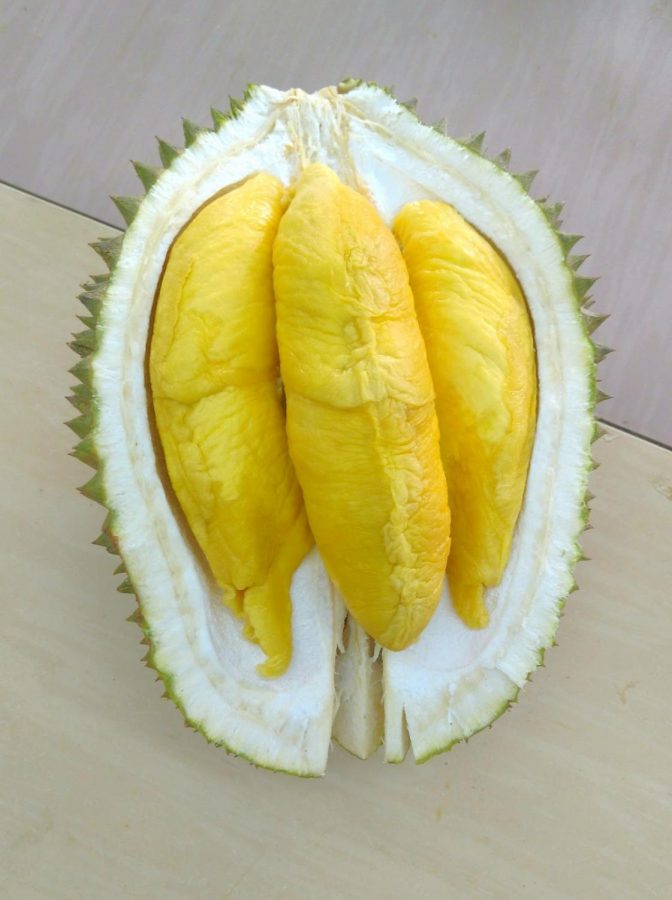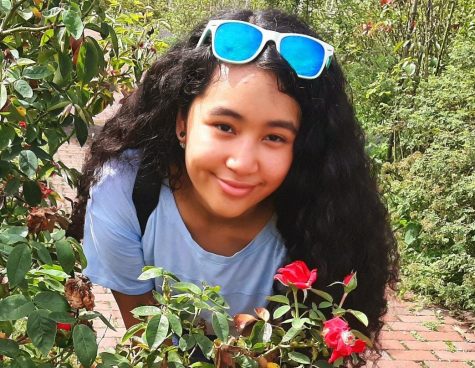A Taste of Malaysia
Durian, the king of all fruits, is a Malaysian delicacy.
September 12, 2019
This summer, I had the opportunity to explore my family roots. My mother, who was a Chinese born in Malaysia, left her home after graduating high school to have a better life here in America. After 20 years, my mother went back to her homeland and brought along my father and me.
Located just above Singapore and east of the Indonesian island of Sumatra, the country of Malaysia is comprised of indigenous tribes, Malay, Chinese, and Indian people. Because it is so culturally diverse, language, food, and religion have molded Malaysia into the nation it is today. Malay is the primary language used, but English is also a common language used by the citizens.
Because the country used to be a British colony as early as the 18th century, it has become more modernized as its economy continues to develop. One would be surprised to find that cities such as Kuala Lumpur (Malaysia’s capital) and Kuching are comprised of tall buildings and an overall urban lifestyle.
Malaysia is divided between a west side and an east side. On the east side, there are two provinces, called Sabah and Sarawak, that contain other major cities. The west side is renowned for being more advanced than East Malaysia. In the province of Sarawak, my mom was born in a city called Sibu. Sibu, although small, is quite charming. There, I met what felt like at least one hundred of my aunts, uncles, and cousins.
Because it is Chinese tradition, my mom’s family members would endlessly stuff their faces with food from morning to night. You can imagine how many pounds I gained after this trip! But here in Sibu, although signs of poverty can be seen, it is an overall rich city with well-off people. Regardless, food is very precious and given to guests as a show of their love and hospitality. Oftentimes, because we live in the United States, we take what we have for granted, and sometimes forget to appreciate what is served before us. The way most people lived was an eye-opening experience for me. In Malaysia, people were living in run-down houses and selling food on the streets.
On a more optimistic note, there were many attractions in Malaysia that swept me off of my feet. For the first week,
my family and I visited Georgetown in Penang and Kuala Lumpur, which are in West Malaysia. In Georgetown, there are numerous historical sites, wall murals on the streets, interactive museums, and restaurants to visit. There, I was able to go to Wonderfood, where inside this museum, artists have created giant replicas of local foods that you can take pictures with. Just take a look at this big chendol! Chendol is a local dessert that consists of shaved ice, green jelly, red beans, and coconut milk. This is definitely one of the foods that you must try!
At the museum, I learned that Malaysians eat six meals a day and have light snacks before each main meal. Another popular dish that is served, which is one of my favorites, is called Nasi
Lemak. This dish comes with chicken or beef rendang, rice that has been cooked with coconut milk and pandan leaves, fried anchovies, roasted peanuts, and cucumber. (Have I made you drool yet)? Moving onward at Kuala Lumpur, my mom and aunt went to have the famous “King of Fruits,” otherwise known as durian. Durian is probably one of the most worst smelling fruits out there. And because of that, I refuse to try it. However, some people who have tried durian before say that it can taste like almonds or even ice cream (you’ll just have to try it for yourself if you want to find out if this is true). There are different types of durian, but the one that my mom and aunt had was called D197- Mustang King. It had a green spiky outer shell and golden colored fruit inside.
Kuala Lumpur is also known for its Petronas Twin Towers. Reaching 1,483 feet tall, the towers have a total of 88 floors, but the public can only go as high as the 86th floor. The towers are truly stunning! For the remainder of my trip I was located in East Malaysia. Our first stop, as mentioned was Sibu. Our second stop was Kuching, where the Borneo House Museum is located. This museum contained wall murals that had the illusion of popping out at you. Most of the murals were really detailed and allowed for you to pretend that you were actually in the picture. Overall, my family and I had a great time here as we all had a good laugh for the day.
Next up was Miri, where I took pictures outside of a Petroleum Museum (because they were closed) and had toast with kaya (a local coconut egg jam). Did you know that Malaysia gains its wealth from its abundance of petroleum, timber, palm oil, and spices (such as pepper)? On our last two days here in Malaysia, we went to Kota Kinabalu, which is located in the province of Sabah. Here, my playful uncle served as our entertainer and tour guide. Three places really caught my interest. These were Masjid (mosque) Bandaraya Kota Kinabalu, Mount Kinabalu, and Kundasang War Memorial. The mosque was beautiful. Although I didn’t get a chance to go inside, the exterior of the structure was blue and white and contained these magnificent domes and arches. In reaching Mount Kinabalu, the drive took between 2-3 hours, but the drive was worth it, as scenic views of the mountain surrounded us along the way. Mount Kinabalu is 13,435 feet tall. All in all, driving up the mountain was a very humbling experience as my family and I escaped the city to enjoy the wonders of nature. Lastly, we went to the Kundasang War Memorial site, where a memorial was dedicated to Australian and British prisoners who died at the Sandakan POW (prisoners of war) Camp and the death marches to Ranau during World War II. The whole site had gardens that were dedicated to different people, and were all decorated with colorful flowers.
Overall, this trip has been a huge blessing and I am so grateful for getting to explore this side of the world. Life is too short, so make sure to go out into the world to see what it has to offer.





